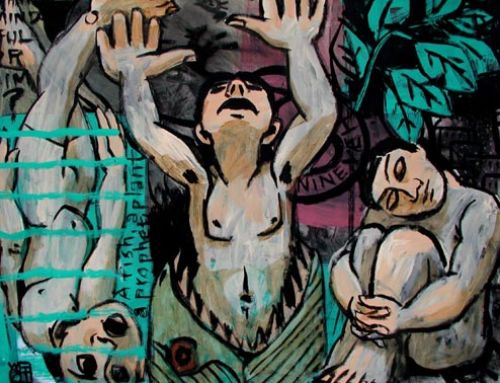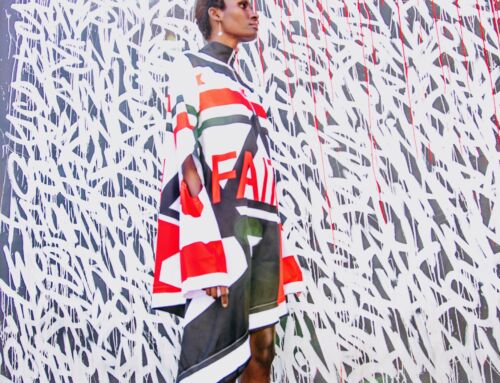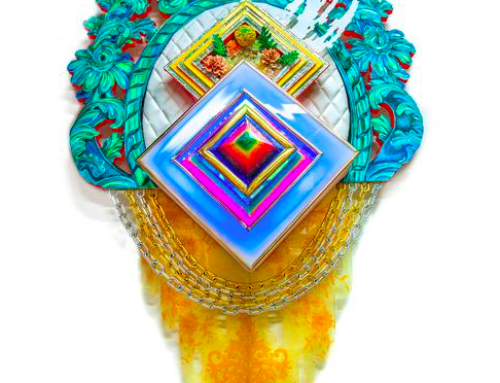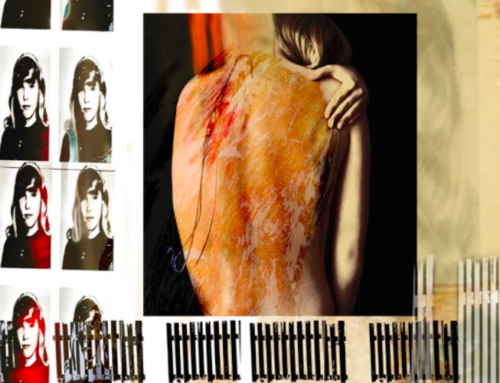As the 2017 Jerusalem Biennale comes to a close, we (IFAF) reflect on the diverse artwork that we saw in Jerusalem. One collection of works that we continue to talk about is Vessels. The series of contemporary sculpture works by artist Ofer Grunwald examined the relationship between spirituality and control when religious objects are placed in human hands. “My exhibition was based around tension, and since trees are living subjects, and not objects, that tension is inherent in them. They naturally contain the tension between their raw, dynamic nature as a living subject, and the aesthetic discipline of presenting them as static artistic object. They contain the tension between the ephemeral and the eternal, between the momentary and the continuum.”
The Israeli native, who grew up in Narberth, Pennsylvania has been practicing the art of bonsai for thirteen years. “I find bonsai to be an extremely potent medium, since it is not a signifier or a placeholder – it is the thing itself.” Reflective of the Jerusalem Biennale’s theme of The Watershed (the convergence and separation of bodies of water, and pivotal moments in time) Grunwald’s work expresses connection and distance between spiritual discipline and control. Just as the art of bonsai necessitates the use of restraint to create beauty, such restraint can damage the living tree when not applied with proper consideration. Grunwald states that “in the exhibition, the trees were a very powerful and effective vehicle to heighten the tension in each of the works, to drive the point across of religious objects being used as a physical means of control over a living object. Thus, rendering the religious objects physical and earthly, and the trees spiritual and ethereal.”
From Grunwald’s perspective, the line between control and constructive forms of discipline is thin, yet distinctive. In terms of bonsai art, “so long as discipline is secondary and willing to accept and adapt to natural growth, it will remain constructive. But when discipline becomes control, the system is pushed out of balance and you start to scar, oppress, and harm the tree.” The sculpture “Tefillin,” draws on its namesake to facilitate this conversation. In this work, the form appears to be almost human with shoulders, arms, and neck growing out of the bonsai trunk. The powerful shape of the tree is wrapped in leather straps. These leather straps, called tefillin, are ritually wrapped around the body during morning prayers to symbolically bind religious teachings to the self. The sculpture makes a visual connection between the leather straps and bonsai wire. Grunwald states that the bonsai artist must view their efforts as adaptive. He uses the Buddhist saying ‘be like water’ to define the artist’s relationship to the bonsai tree. “If the discipline flows from the tree’s needs and from how the tree works, it is no longer an external force applied to a living subject. It becomes like the water that nourishes the tree, which the tree happily absorbs and spreads throughout itself on its own.”
“Tefillin” was a striking work. Keeping with the philosophy of bonsai, the sculpture was on display only as long as was healthy for the tree. In Grunwald’s own words, “I would say that the work exists between the three poles of beauty, discipline, and control.”
photo: Reouven Ben Haim







Leave A Comment